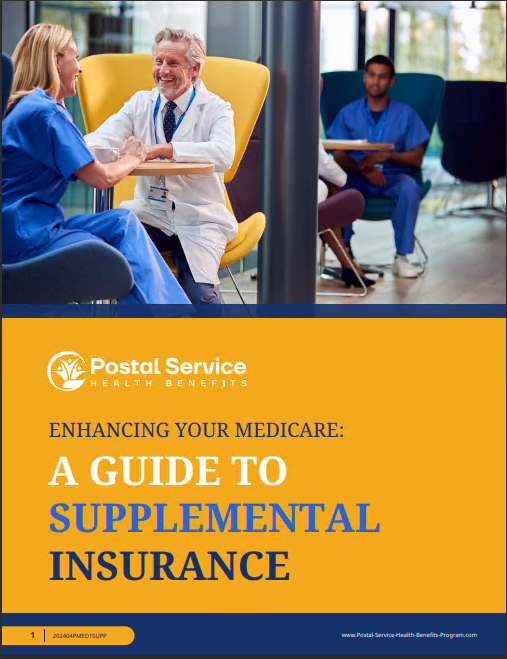Key Takeaways
- A New Chapter for Postal Workers: PSHB Open Season (November 11 to December 9, 2024) allows postal employees and retirees to explore health plan options tailored to the unique needs of the postal community.
- Make the Most of Open Season: Understanding plan options, Medicare requirements, and enrollment processes during PSHB Open Season ensures a smooth transition for postal workers and retirees, starting in 2025.
Understanding PSHB Open Season
For postal employees and retirees, this year marks a notable shift. The Postal Service Health Benefits (PSHB) program, which opens its enrollment season from November 11 to December 9, 2024, will officially replace the Federal Employees Health Benefits (FEHB) plan starting January 1, 2025. This Open Season is a unique opportunity to review, adjust, and make decisions about your health coverage that will last for the year ahead. Let’s dive into what to expect, what to consider, and how to approach this transition with clarity.
What is the PSHB Program?
The PSHB program has been specifically designed for the postal workforce, focusing on coverage needs that align with the unique circumstances postal workers face. While similar in many ways to the FEHB, the PSHB’s tailored approach seeks to ensure postal employees, annuitants, and their eligible family members receive benefits suited to their particular healthcare needs and career considerations.
For postal employees or retirees already enrolled in an FEHB plan, this Open Season marks an automatic transition to a corresponding PSHB plan unless you choose to make changes.
Key Dates to Remember
- Open Season Dates: November 11 – December 9, 2024
- Effective Date of PSHB Enrollment: January 1, 2025
Mark these dates on your calendar to ensure you don’t miss out on making any updates or changes to your healthcare coverage during Open Season.
Navigating the Enrollment Process
Navigating the enrollment process in this first PSHB Open Season might feel a bit overwhelming, but here’s a step-by-step breakdown to keep you on track:
1. Automatic Enrollment
Most current FEHB enrollees will be automatically transitioned into a corresponding PSHB plan for 2025. You’ll receive a notification letter before Open Season with details on which PSHB plan you’re being transitioned into.
2. Plan Comparison and Options
While the automatic transition process is convenient, it’s important to review your options thoroughly. During Open Season, you can explore other PSHB plans to see if they better meet your current needs. Reviewing factors like covered services, copays, deductibles, and network providers will help you determine the most suitable plan for you and your family.
3. Medicare Integration for Eligible Annuitants
If you or a family member are eligible for Medicare, make sure to review how the PSHB plan coordinates with Medicare. Starting January 1, 2025, certain Medicare-eligible Postal Service annuitants and Medicare-eligible family members will be required to enroll in Medicare Part B to maintain PSHB coverage. There are exceptions for those who retired on or before January 1, 2025, and have not previously enrolled in Medicare Part B.
4. Plan Adjustments
Once you’ve reviewed your options, you can either allow the automatic enrollment to proceed or make adjustments during Open Season. You’re free to change plans if you find a different option that better suits your needs for the coming year.
Deciphering the Details: How PSHB Differs from FEHB
Although PSHB is rooted in the same system as FEHB, a few differences may impact your choice in health coverage:
Tailored Benefits for Postal Employees
The PSHB program was created with postal workers in mind. While many aspects of the coverage are similar to FEHB, PSHB plans offer a focused approach to meet postal-specific health needs.
Coverage and Cost Adjustments
You may notice slight differences in premiums, out-of-pocket costs, and coverage for various services, so reviewing each plan’s details can make a significant difference in selecting a plan that aligns with your budget.
Network Adjustments
Some PSHB plans may differ from FEHB in terms of provider networks, so it’s wise to ensure that your preferred healthcare providers are covered in your selected PSHB plan. Take note of any network changes, especially if you’re currently seeing specialists or have preferred medical facilities.
Making Sense of Medicare Integration
PSHB plans offer unique integration with Medicare, and the new requirement to enroll in Medicare Part B can raise some questions. Here’s what you need to know:
Part B Requirement for Certain Annuitants
Some PSHB enrollees will be required to join Medicare Part B, as this coverage works in tandem with your PSHB benefits. Medicare becomes primary insurance in certain cases, while PSHB serves as secondary. This can significantly reduce out-of-pocket costs for healthcare services.
Exceptions to Medicare Enrollment
If you retired on or before January 1, 2025, and have not enrolled in Medicare Part B, you may not be required to do so. However, if you’re newly eligible for Medicare, make sure to understand your obligations to avoid any potential lapses or gaps in coverage.
Preparing for the Transition: Steps to Consider
Now that you’re aware of the basics of PSHB Open Season, it’s time to think through your plan selection to ensure a smooth transition:
1. Identify Your Health Needs
Consider whether your healthcare needs have changed over the past year. Are you anticipating any new medical expenses, regular treatments, or prescription needs? If so, consider how each PSHB plan will handle these requirements, including coverage levels, copayments, and out-of-pocket costs.
2. Evaluate Premiums and Deductibles
It’s helpful to assess your budget and determine how much you’re willing to allocate toward healthcare expenses, including monthly premiums, deductibles, and copayments. Be mindful that a higher premium plan may lower your deductible and vice versa, so weigh these factors against your anticipated healthcare needs.
3. Check Provider Networks
If you have preferred healthcare providers or specialists, verify their inclusion in your chosen PSHB plan. This will ensure you maintain continuity of care and avoid unexpected out-of-network costs.
4. Consider Family Needs
If you’re enrolling family members, consider their healthcare requirements as well. Some plans offer better family coverage or specific benefits that could make a difference for multi-person households.
5. Understand Preventive Services
PSHB plans generally offer a range of preventive care services at no additional cost, but it’s beneficial to review which services are covered. Preventive care can help reduce costs and keep you proactive in managing your health.
6. Plan for Medicare Coordination (If Applicable)
If you or a family member are Medicare-eligible, think about how the PSHB plan will coordinate with Medicare. This can impact overall costs, as Medicare Part B often reduces out-of-pocket expenses for certain services, and knowing your integration requirements helps prevent any disruptions.
Staying Informed During Open Season
During Open Season, you’ll have access to various resources to help you make informed decisions:
- OPM’s PSHB Resources: The U.S. Office of Personnel Management (OPM) provides valuable resources, plan comparisons, and premiums to help you navigate your options.
- Mail Notifications: Watch for mailed notifications about your automatic enrollment plan and other essential Open Season updates.
- Online Tools: You’ll have access to plan comparison tools to help you explore the differences in coverage, costs, and provider networks among PSHB plans.
Avoiding Common Pitfalls
To make the most of PSHB Open Season, avoid these common pitfalls:
- Procrastination: Start your plan review early to ensure you have ample time to assess your options and avoid rushed decisions.
- Overlooking Medicare Requirements: If you or a family member are Medicare-eligible, check your Part B enrollment requirements to ensure seamless coverage.
- Skipping Plan Details: Avoid making assumptions about coverage. Each PSHB plan has its own details, so read through these carefully to find the best match.
- Assuming Automatic Enrollment Covers All Needs: While the automatic enrollment process is helpful, it’s no substitute for a personal review. Make sure the corresponding PSHB plan aligns with your unique health and financial needs.
Smooth Sailing into 2025
Embracing this transition to PSHB doesn’t have to be overwhelming. With a proactive approach, a clear understanding of your needs, and a thorough review of available plans, you can confidently make a choice that best supports you and your family’s healthcare needs in 2025.






